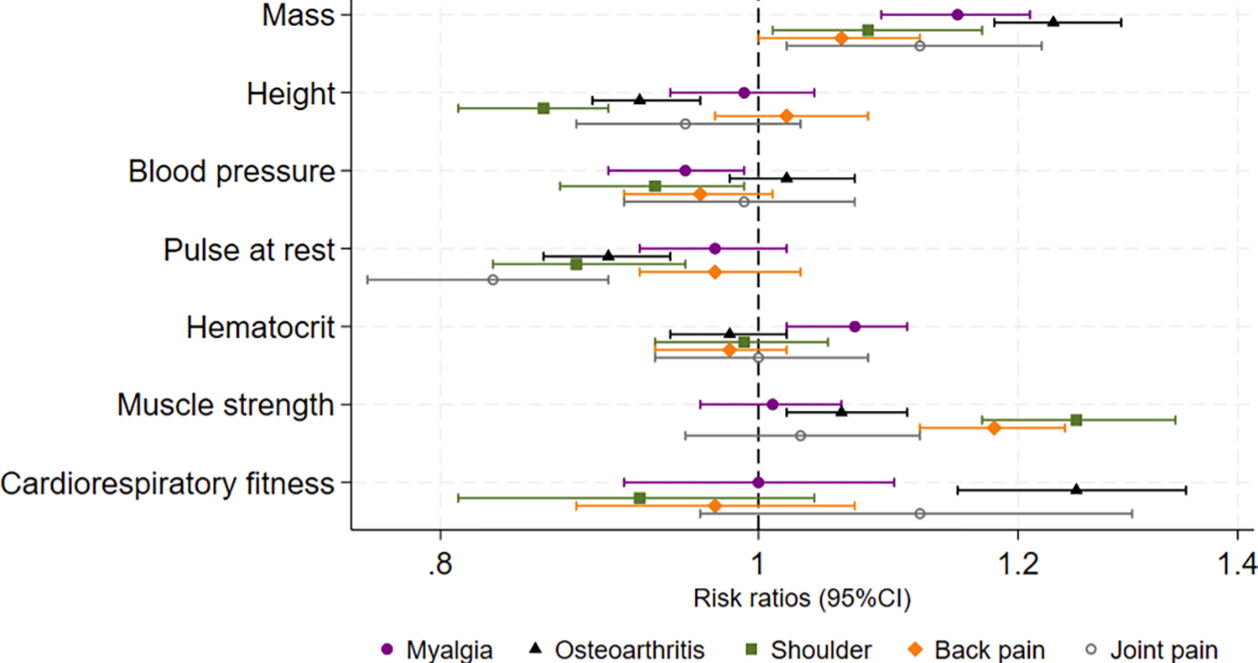Young Males and Future Risk of MSK and Chronic Diseases Save

A large cohort of 18-year-old Swedish males were followed longitudinally for cardiovascular, respiratory, and musculoskeletal outcomes. They found that high body mass index (BMI) and smoking in youth were linked to the studied diseases later in life. Moreover, physical fitness and high muscle strength in youth were associated with an increased risk of osteoarthritis, back and shoulder pain later in life.
A total of ~40,000 18-year-old Swedish males were enrolled and examined in 1969 to 1970, and followed up until age of 60 years. Participants were followed through the Swedish National Patient Register for common outcomes - musculoskeletal (osteoarthritis, back pain, shoulder lesions, joint pain, myalgia), cardiovascular (ischemic heart disease, atrial fibrillation), and respiratory diseases (asthma, chronic obstructive pulmonary disease, bronchitis).
Higher BMI was associated with an increased risk of disease:
- Musculoskeletal (RR 1.12; 95% confidence interval, CI 1.09, 1.16])
- Cardiovascular (RR 1.22; 1.17, 1.27]
- Respiratory diseases (RR 1.14; 95% CI 1.05, 1.23]
Interestingly, higher muscle strength and cardiorespiratory fitness were associated with higher risk:
- Musculoskeletal disease (RRs 1.08; 1.05, 1.11]
- Osteoarthritis (RR (RR 1.23; 1.15, 1.32]
- Back pain (RR 1.18; 1.12, 1.24]
- Shoulder diseases (RR 1.27; 1.19, 1.36] per 1 SD)
Higher cardiorespiratory fitness was protective against both cardiovascular and respiratory diseases (RRs 0.91 and 0.85).
Smoking (vs. non-smoking) increased the risk of musculoskeletal (RR 1.11), cardiovascular (RR 1.58), and respiratory diseases (RR 1.93).
While fitness in younger people is assumed to have long term protective benefits, this large cohort study suggests high cardiorespiratory fitness and high muscle strength in youth were associated with increased risk of musculoskeletal disease in middle age. The authors speculate these associations are mediated by chronic overload or acute trauma. More attention to musculoskeletal injury prevention should be considered and studied.












If you are a health practitioner, you may Login/Register to comment.
Due to the nature of these comment forums, only health practitioners are allowed to comment at this time.